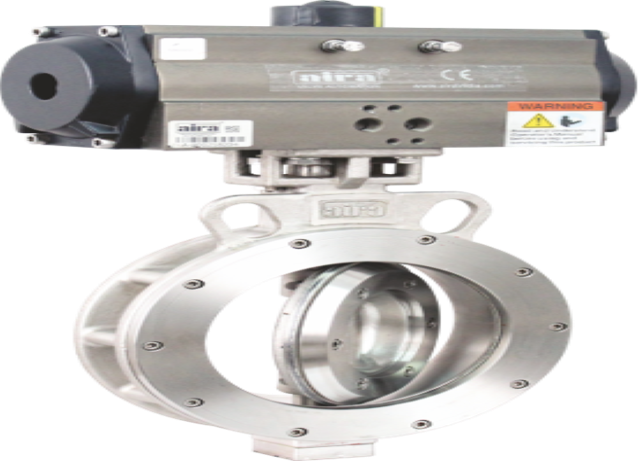The triple offset butterfly valve is ideal for applications that require a bubble-tight shut-off. Some applications require bubble-tight shut-off, which cannot be achieved with double offset butterfly valves. Traditional butterfly valves are not well suited to some applications, for instance, those involving harsh chemicals or media with small particles prone to clogging valves. The Triple Offset Technology offers superior benefits in such applications.
Butterfly valves with triple offsets have three offsets each. Disc/seat sealing surfaces and the centerline of the bore are the two locations that determine the location of the shaft. In contrast, the third offset is determined by the angle of the seat cone.
Offsets in Butterfly Valve:

Zero Offset
The Disc can rotate 360 degrees around its center axis. In order to seal, the Disc deforms the soft seal. As a result, full friction is maintained throughout the entire operation cycle.
Double Offset
To accommodate seat displacement, the shaft is shifted from the centerline of the disc seat and the bore (offset one), as well as from the centerline of the disc seat itself (offset 2). In this way, the seat is lifted out of the seal by a cam-action during operation. Friction occurs when the door is opened and closed for the first 10 degrees and the final 10 degrees.
Triple Offset
The third offset is determined by the geometry of the sealing components. A right-angled cone is formed by machining each sealing component into an offset conical profile, ensuring friction-free stroking throughout the service life. There is no mechanical contact made until the final point of closure, at which the 90-degree angle serves as a mechanical stop. As a result, This prevents the disc seat from over traveling.
Advantages of Triple Offset Butterfly Valve
‘Cam-action’ and ‘right-angled’ conical sealing design ensure that the metal sealing components are never in contact until it reaches their final degree of closing. Hence, the valve’s life is greatly extended as a result of repeatable sealing.
This guarantees zero leakage due to bubble-tight sealing from metal to metal.
Due to the absence of elastomers or corrosion-resistant materials in the construction of the valve, it is suitable for use in harsh media.
Friction-free stroking throughout the valve is made possible by the geometric design of sealing components. This prolongs the life of the valve and allows it to be fitted with a lower torque actuator.
Because there are no cavities between sealing components, valves won’t clog, they’ll last longer and they’ll require less maintenance.
Disadvantages of Triple Offset Butterfly Valve
Triple offset butterfly valves eliminate some of the more common problems associated with traditional butterfly valves, such as their inability to handle slurry applications, lack of bubble-tight shut-offs, and leak paths around the disc stem.
For internal repairs, they must be removed from the piping, and they are relatively expensive compared to some other valve types.
However, They are worthwhile investments because of their long service life and low maintenance requirements.
Industries consume Triple Offset Butterfly Valve
Aira Euro Automation is a leading manufacturer of triple offset butterfly valves in India. Triple offset butterfly valves from Aira Euro are used across a wide variety of industries, including oil and gas, chemical, petrochemical, energy, offshore, and steel ? wherever critical applications require reliable functionality and 100 percent zero leakage. Triple Offset butterfly valves are manufactured by us in India according to API 609 – 0055 standards. For more information about triple offset butterfly valves and our complete selection of butterfly valves at https://www.airaindia.com/, for more information contact us.








